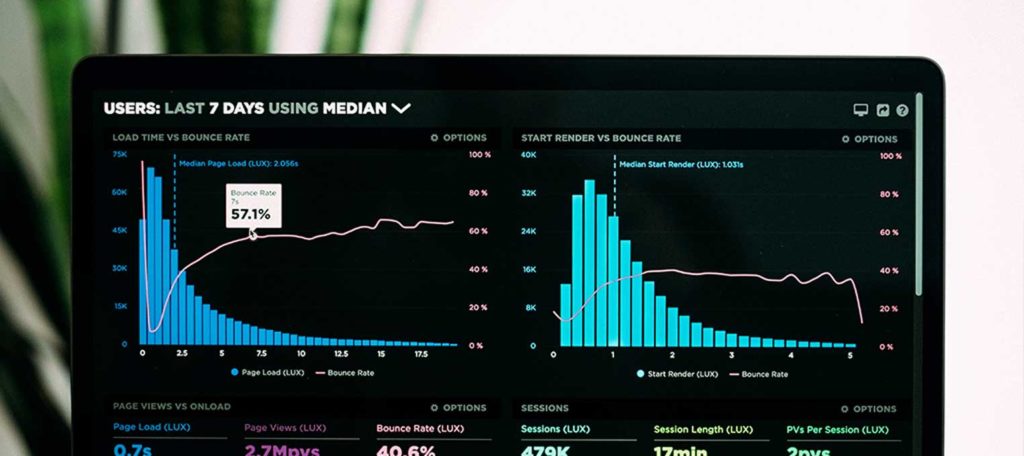February 8, 2021
Got Ad Fraud? 5 Affiliate Marketing Metrics to Watch

As you’ve likely heard, e-commerce is growing at an unprecedented rate, especially since COVID-19 changed our lives, including the way we shop, seemingly overnight. In just six months, COVID-19 has accelerated e-commerce growth by levels that industry experts predict would have taken six years to hit pre-pandemic. In fact, in May 2020 online spending totaled $82.5 billion, a 77% year-over-year increase, which makes now a perfect time to double down on affiliate marketing.
It’s important to understand, however, the more you invest in affiliate marketing, the more you increase your chances of falling victim to fraud if you don’t protect yourself. And you’re not alone. Every year, an estimated 2% of all transactions are attributed to affiliate fraud, and the estimated cost of digital ad fraud worldwide is predicted to reach $44 billion in 2022. The good news is, there are fraud-prevention tools that can block bad traffic before it ever hits your site.
That doesn’t mean, though, that you can let your guard down and only occasionally review your affiliate program’s analytics. Numbers don’t lie, and that data is a powerful tool to stop small problems from becoming a huge, costly headache. But the data is only helpful if you know what you’re looking for, right?
Stay ahead of fraudsters and bad actors by reviewing these five key metrics every single week:
1. Mean time to conversion:
Also known as time to action or time to install, this is the amount of time between when a user clicks on a link and the conversion. Of course, some variation in this number is completely normal but pay attention to the outliers: publishers doing significant volume with very short mean times to conversion, or alternately, publishers with longer than average mean times to conversion. Both may be telltale signs that a fraudster is simulating clicks to a set of cookies (a.k.a. cookie stuffing) and must be investigated, stat.
2. Traffic by URL rank:
Before you look at this one, remember your partners with the highest-ranking URLs will most likely drive the majority of your traffic. Generally, that’s no cause for alarm, but a lot of traffic, clicks, or sales coming from a low-ranking URL is definitely cause for concern and certainly warrants a closer look.
3. Publisher conversion rates
A conversion rate, the number of conversions divided by the number of clicks, shows you the average percentage of people who make a purchase. This number naturally varies by publisher based on factors such as the quality and engagement of their traffic. But again, pay attention to the anomalies. Publishers with a high volume of clicks but extremely low conversion rates could be an indication of click fraud.
4. Conversion rates by placement
This data breaks down the average conversion rate by individual placement, like a specific web page for instance. In this case, unusually high numbers are a real red flag and may imply creative fraud, a practice in which fraudsters alter your message in some way to lure customers. Keep in mind, fraudsters are unlikely to bother with low traffic placements because the payout is simply too small.
5. Quantity of redirects:
Always keep a close eye on the URLs that are referring traffic, as well as the number of redirects. A suspicious URL or a lot of redirects may suggest that an affiliate is attempting to hide the sources of traffic. Trust your instincts. If something feels off, start asking questions.
Once you start digging into your data on a regular basis, the more comfortable you’ll become analyzing it. And trust us, it’s time well spent. After all, less ad fraud means higher ROI–and that’s always a good thing.
But, fair warning, affiliate fraud never sleeps, and fraudsters are always upping their game to beat the system. Often, the easiest and most cost-effective solution is to work with an experienced team that can not only maximize every dollar you spend but also has the technology to protect your investment. PartnerCentric is the only agency in the industry that combines award-winning account management with our proprietary software tools. We call this our Technology Enabled Account Management (TEAM), and this unique approach gives you clarity and control over all of your investments in the affiliate channel, true attribution alignment, and the peace of mind that your brand is protected from ad fraud.
Ready to maximize this effective marketing channel? Check out our quick “Horror Stories from an Affiliate Marketing Insider” video. We’ve covered a lot of ground in this short 10-minute video about things like:
- Why your affiliate program isn’t performing as well as you think it is
- Compliance issues–and why you might be having them
- Attracting qualified traffic–and avoiding the rest
- High quality content–and the value of quality publishers
- The best tools to measure the most meaningful metrics